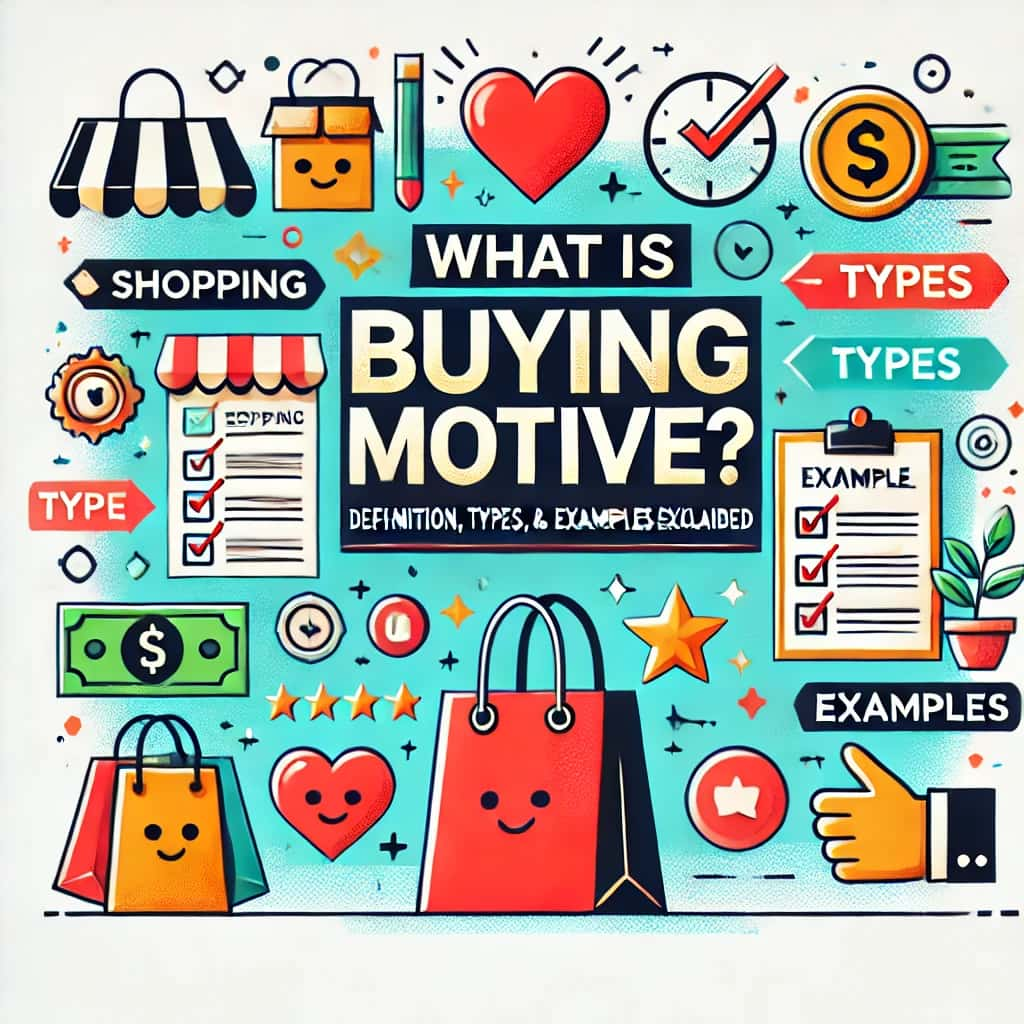What are you looking for?
THE TECH PRODUCT
THE DESIGN STUDIO
THE MEDIA HOUSE
THE MARKETING STUDIO
THE AR LAB

Discover the concept of buying motives, learn the different types, and explore real-life examples. Understand how buying motives impact consumer choices and marketing strategies.
Have you ever wondered what drives us to make a purchase? Whether it’s a practical buy like groceries or an indulgent splurge like a luxury watch, every decision is influenced by something deeper—our buying motives. But what exactly is a buying motive? And why does it matter so much in marketing and sales? In this article, we’ll dive into the world of buying motives, exploring their definition, types, and real-life examples that reveal how they influence our choices.
Buying motive refers to the reasons or factors that drive a consumer to purchase a product or service. Simply put, it's what motivates a person to buy. Buying motives are deeply rooted in emotions, needs, desires, and even social pressures, making them a crucial focus for marketers who want to understand and influence their target audience’s decision-making process.
When businesses understand buying motives, they can better connect with their audience by tailoring messages that speak directly to these underlying desires.
Buying motives are diverse, but they generally fall into a few primary categories. Each type offers insights into what fuels a purchase decision and how businesses can tap into these motivations effectively.
Emotional buying motives are driven by feelings, desires, or impulses rather than logic. When emotions play a major role in a purchase decision, we’re often acting out of impulse, self-indulgence, or even a need for emotional comfort.
Rational buying motives are the opposite of emotional motives. Here, people make decisions based on logic, practicality, and value. When rational motives are in play, consumers focus on aspects like quality, price, and functionality.
Social buying motives stem from a desire to fit in, feel accepted, or achieve social recognition. These motives are often driven by external factors like trends, brand image, or the influence of peers.
Patronage buying motives are about loyalty, trust, and preference for a specific brand, store, or seller. When people have a positive experience with a business, they’re more likely to return, making this a valuable motivation for marketers.
For businesses, understanding buying motives isn’t just about predicting behavior—it’s a strategic tool that can guide product development, marketing messaging, and customer service. Here’s why:
Enhanced Marketing Strategy
Knowing what drives customers allows businesses to create more effective marketing campaigns. For instance, if a company knows its audience is motivated by rational factors, it can highlight product features, durability, or cost savings.
Building Customer Loyalty
By tapping into emotional and patronage motives, businesses can foster loyalty. Loyalty programs, personalized experiences, and community engagement are effective ways to strengthen these motives.
Driving Conversions
When companies understand why people buy, they can better match product benefits to customer needs, ultimately increasing conversions and sales.
Improving Customer Experience
A customer-centric approach that addresses various buying motives ensures a positive experience, leading to repeat business and strong word-of-mouth marketing.
Seeing buying motives in action helps to make the concept more relatable and tangible. Here are some examples of how these motives come into play:
Understanding what buying motive is and how it drives consumer behavior provides powerful insights into marketing and sales strategies. By identifying the different types of buying motives—emotional, rational, social, and patronage—businesses can tailor their approach to connect with their customers on a deeper level. Whether you’re a business owner, marketer, or simply a curious consumer, recognizing these motives helps in making informed, strategic decisions.
So next time you make a purchase, take a moment to ask yourself: What’s my buying motive?
What are the main buying motives?
The main buying motives are emotional, rational, social, and patronage. Each of these influences why people make certain purchasing decisions.
How do emotional and rational buying motives differ?
Emotional buying motives are driven by feelings, like happiness or excitement, while rational buying motives are based on logic and practical factors, like quality and price.
Why is understanding buying motives important for businesses?
Knowing buying motives helps businesses create targeted marketing strategies, build customer loyalty, and increase sales by aligning products with customer needs.
Can a purchase be driven by more than one buying motive?
Yes, many purchases are influenced by a combination of motives. For example, someone might buy a product for its quality (rational) and brand reputation (social).
What’s an example of a social buying motive?
A social buying motive could be choosing eco-friendly products to reflect a commitment to environmental values, appealing to social acceptance and image.